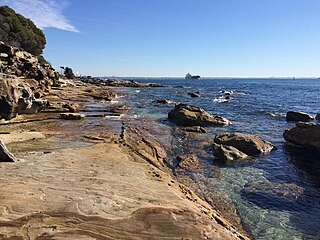
The Kamay Botany Bay National Park is a heritage-listed protected national park that is located in the Sydney metropolitan region of New South Wales, in eastern Australia. The 456-hectare (1,130-acre) national park is situated approximately 16 kilometres (9.9 mi) south-east of the Sydney central business district, on the northern and southern headlands of Botany Bay. The northern headland is at La Perouse and the southern headland is at Kurnell.

Lincoln National Park is a protected area in the Australian state of South Australia located about 249 kilometres (155 mi) west of the state capital of Adelaide and about 9.5 kilometres (5.9 mi) south of the municipal seat of Port Lincoln. It consists of a mainland area on the Jussieu Peninsula on the south eastern tip of Eyre Peninsula and a number of nearby islands. The national park contains significant sites of natural, indigenous and early European heritage.

Lubec is a town in Washington County, Maine, United States. It is the easternmost municipality in the contiguous U.S. and is the country's closest continental location to Africa.
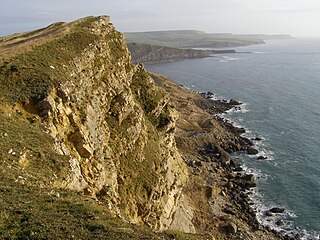
The Jurassic Coast is a World Heritage Site on the English Channel coast of southern England. It stretches from Exmouth in East Devon to Studland Bay in Dorset, a distance of about 96 miles (154 km), and was inscribed on the World Heritage List in mid-December 2001.
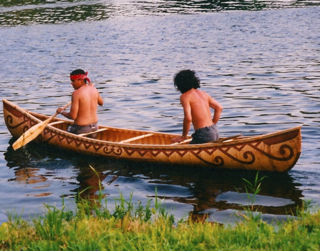
The Passamaquoddy are a Native American/First Nations people who live in northeastern North America. Their traditional homeland, Peskotomuhkatik, straddles the Canadian province of New Brunswick and the U.S. state of Maine in a region called Dawnland. They are one of the constituent nations of the Wabanaki Confederacy.

Machias Seal Island is an island in disputed water between the Gulf of Maine and the Bay of Fundy, about 16 km (10 mi) southeast from Cutler, Maine, and 19 km (12 mi) southwest of Grand Manan Island, New Brunswick. Sovereignty of the island is disputed by the United States and Canada. The Canadian Coast Guard continues to staff a lighthouse on the island; the first lighthouse was constructed there in 1832.

West Quoddy Head, in Quoddy Head State Park, Lubec, Maine, is the easternmost point of the contiguous United States. In 1808 a lighthouse was constructed at the site to guide ships through the Quoddy Narrows. The current tower, with distinctive red-and-white stripes, was constructed in 1858 and is an active aid to navigation. The 3rd order Fresnel lens is the only 3rd order and one of only eight Fresnel lenses still in use on the Maine Coast.
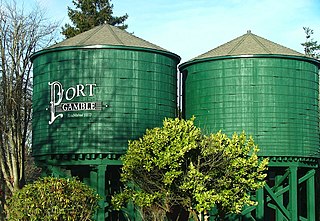
Port Gamble is an unincorporated community on the northwestern shore of the Kitsap Peninsula in Kitsap County, Washington, United States. It is also a small, eponymous bay, along which the community lies, near the entrance to Hood Canal. The unincorporated communities of Port Gamble and Little Boston, part of Kitsap County, lie on the west and the east side, respectively, of the mouth of this bay. The Port Gamble Historic District, a U.S. National Historic Landmark, covers one of the nation's best-preserved western lumber towns.
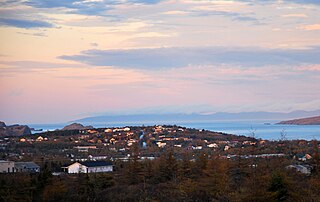
Bay Roberts is a town located on the north shore of Conception Bay on the northeastern Avalon Peninsula in the province of Newfoundland and Labrador, Canada. The growth of the local economy can be connected to the town's proximity to other major Newfoundland markets, by road and by water.
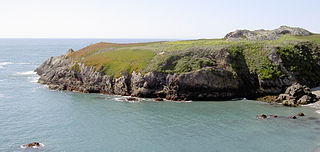
Duncans Point is a cape on the Pacific Coast of northern California in the United States. It is located in Sonoma County at 38.393°N 123.0947°W, approximately 45 miles (70 km) northwest of San Francisco and approximately 20 miles (30 km) west of Santa Rosa.

Gribbin Head is a promontory on the south coast of Cornwall, England, UK, owned and managed by the National Trust. It separates St Austell Bay from the estuary of the River Fowey and is marked by a large tower used to aid navigation of ships approaching the local harbours. The nearest town is Fowey. The western point of the headland is called Little Gribbin.
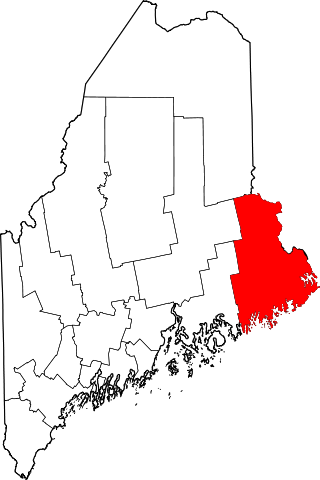
This is a list of the National Register of Historic Places listings in Washington County, Maine.
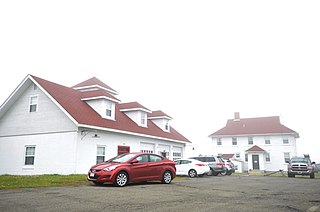
West Quoddy Lifesaving Station is a historic coastal rescue station on West Quoddy Head in Lubec, Maine. The lifesaving station was built in 1919, and was operated by the United States Coast Guard until 1972. It was listed on the National Register of Historic Places on April 20, 1990. It now houses a bed and breakfast inn.
Pond Island is a small 32-acre (13 ha) island in Penobscot Bay, on the central coast of Maine, United States. The island is a conservation property of the Maine Coast Heritage Trust, and is open to the public, with two small campsites. The island was listed on the National Register of Historic Places in 1979 for the significance of its prehistoric archaeological sites. It is named for the saltwater pond located at its center.
Donald Soctomah is a Native American author, filmmaker, historian, and politician. He serves as the tribal historic preservation officer for the Passamaquoddy tribe, where he works with both the U.S. and Canadian governments on the protection of culturally significant sites, artifacts and knowledge. Soctomah has written several books about Passamaquoddy history, as well as a children's book, Remember Me: Tomah Joseph's Gift to Franklin Delano Roosevelt and The Canoe Maker.
The eastern part of the United States state of Maine is known to have historically significant examples of prehistoric and historic rock art. The easternmost shore, particularly the shores and islands of Machias Bay, contain one of the greatest concentrations of rock art on the east coast of North America, with creation dates estimated to range from c. 1000 BCE to beyond the European contact period. Many of these sites are listed on the United States National Register of Historic Places.

The Clam Cove Pictograph Site is a series of prehistoric rock art on the Gulf of Alaska coast of Lake Clark National Park and Preserve in southern Alaska. The site consists of a pair of pictograph panels, oriented facing south and west. Figures include numerous depictions of humans, and what appear to be killer whales. The site has long known to the local Alutiiq people, whose native corporation has identified it as a particular site of historic interest. It was first visited by an archaeologist in 1968, and its deteriorating figures have been recorded on a number of occasions since.

The St. Andrews North Point Lighthouse is an active lighthouse in St. Andrews, New Brunswick on the southern tip of the peninsula in the Passamaquoddy Bay; it is commonly known as Pendlebury Lighthouse from the name of the family who took care of it.
The Maine Coast Heritage Trust is a nonprofit land conservation organization. Its conservation partner is the Maine Land Trust Network, which is one of its programs.
















